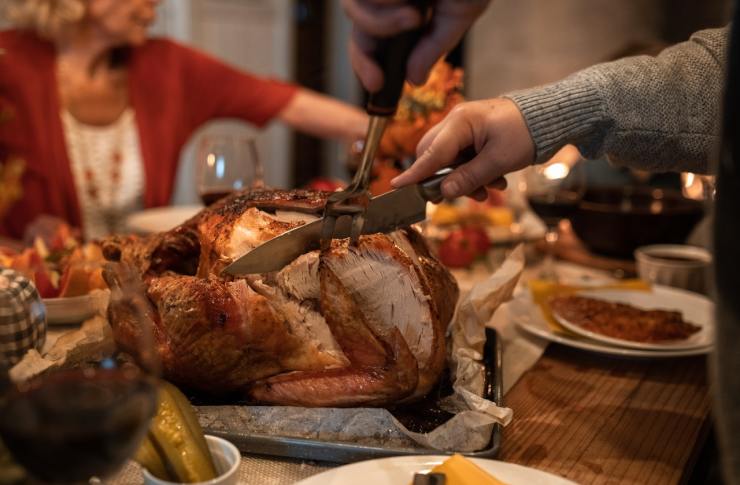Exploring Modern Senior Living Options: Apartments to Cottages
The landscape of senior housing has evolved dramatically in recent years, offering adults aged 55 and over more diverse and appealing living options than ever before. From purpose-built apartments with modern amenities to charming cottages designed for independent living, today's senior housing market caters to various preferences, needs, and lifestyles while fostering community and comfort.

The senior living industry has transformed significantly over the past decade, moving away from institutional-style facilities toward communities that emphasize independence, comfort, and quality of life. Modern senior housing developments now feature thoughtfully designed spaces that balance accessibility with aesthetics, creating environments where older adults can thrive. With options ranging from apartment-style living to standalone cottages, seniors today have unprecedented choices when seeking their ideal home for retirement years.
What Features Do Modern 2-Bed Senior Apartments Offer?
Contemporary 2-bedroom senior apartments represent a significant departure from outdated perceptions of senior housing. These residences typically feature open floor plans with spacious living areas, modern kitchens with energy-efficient appliances, and bathrooms designed with accessibility in mind. Many new developments include walk-in showers with grab bars, wider doorways, and single-level layouts that eliminate the need for stairs.
Beyond individual units, these apartment communities often provide amenities that promote active lifestyles and socialization. Common features include fitness centers with equipment modified for older adults, community gardens, game rooms, libraries, and multipurpose spaces for organized activities and events. Many communities also incorporate technology features like emergency call systems, smart home capabilities, and high-speed internet access to help seniors stay connected and secure.
How Are Over 55 Cottages Designed for Independent Living?
Over 55 cottages offer an appealing alternative for seniors who prefer more privacy while still benefiting from community amenities. These detached or semi-detached homes typically range from 900 to 1,500 square feet and feature single-story designs with accessible entrances. The cottage model emphasizes independent living while providing maintenance-free exteriors, allowing residents to enjoy homeownership without the burden of yard work or major repairs.
Architecturally, these cottages often incorporate universal design principles with features like zero-step entries, lever door handles, and ample natural lighting. Many developments arrange cottages in village-like settings with walking paths, community centers, and shared green spaces that encourage neighbor interaction while maintaining personal space. This housing model strikes a balance between the autonomy of traditional homeownership and the community aspects of senior living developments.
What Makes 2-Bed Senior Homes Increasingly Popular?
The growing popularity of 2-bedroom senior homes stems from their versatility and ability to accommodate various lifestyle needs. The second bedroom provides valuable flexibility, serving as a guest room for visiting family, a home office, a craft room, or space for a caregiver if needed. This additional space allows seniors to downsize from larger family homes without sacrificing the ability to host overnight visitors or pursue hobbies that require dedicated space.
Many seniors also appreciate that 2-bedroom configurations allow for separate sleeping arrangements for couples with different schedules or health needs while maintaining the intimacy of sharing a home. Developers have recognized this preference, and many new senior housing communities now offer multiple 2-bedroom floor plans with varying layouts and features. Some designs include split bedroom arrangements for maximum privacy, while others feature jack-and-jill bathrooms or sitting areas between bedrooms.
How Do Senior Citizen Homes Address Different Care Needs?
Modern senior citizen homes increasingly operate on a continuum of care model, allowing residents to access different levels of support as their needs change without relocating to entirely new communities. Independent living options typically offer minimal services beyond home maintenance, while assisted living provides help with daily activities like medication management, bathing, and dressing. Memory care units specialize in supporting those with cognitive impairments through secure environments and specialized programming.
Many communities now feature hybrid models where residents can receive customized care packages in their existing apartments or cottages rather than moving to different sections of the community. This aging-in-place approach helps preserve established social connections and familiar surroundings while ensuring appropriate support. Technology also plays an increasing role, with telehealth services, motion sensors, and wearable devices helping staff monitor residents’ well-being while respecting their independence.
What Housing Options Exist in the Senior Living Market?
The senior housing market encompasses a broad spectrum of options beyond traditional apartments and cottages. Continuing Care Retirement Communities (CCRCs) offer multiple levels of care on a single campus, allowing residents to transition from independent living to skilled nursing care as needed. Cooperative housing models give seniors ownership stakes in their communities and voting rights on management decisions. Niche communities cater to specific interests, from university-based retirement communities for lifelong learners to arts-focused developments for creative seniors.
Understanding the Cost of Senior Housing Options
Senior housing costs vary significantly based on location, amenities, and services provided. Independent living apartments typically range from $1,500 to $4,000 monthly, while cottages in senior communities may cost between $1,800 and $5,000 per month. Assisted living adds approximately $1,500 to $3,000 to these base costs, depending on the level of care required.
| Housing Type | Monthly Cost Range | What’s Typically Included | Additional Costs |
|---|---|---|---|
| Independent Living Apartment | $1,500-$4,000 | Maintenance, some utilities, community amenities | Meals, housekeeping, transportation |
| Over 55 Cottage | $1,800-$5,000 | Exterior maintenance, community amenities | Utilities, housekeeping, meals |
| Assisted Living | $3,000-$7,000 | Care services, meals, housekeeping, activities | Higher levels of care, specialized services |
| Memory Care | $5,000-$10,000 | Specialized care, secure environment, all meals | Specialized therapies, medical management |
Prices, rates, or cost estimates mentioned in this article are based on the latest available information but may change over time. Independent research is advised before making financial decisions.
Entry fees are another consideration for some communities, particularly CCRCs, where initial payments can range from $100,000 to over $1 million, often with portions refundable to heirs. These upfront costs typically secure lifetime access to care services at predictable rates. Many communities also offer different contract types, from all-inclusive arrangements to fee-for-service models where residents pay only for the services they use.
As the senior population continues to grow, the variety and quality of housing options will likely expand further. Today’s senior living market reflects the diverse preferences of older adults who increasingly view retirement as an active, engaging phase of life rather than a period of withdrawal. Whether choosing an apartment with robust community programming or a cottage that maximizes independence, seniors now have unprecedented opportunities to find housing that aligns with their vision for their later years.




